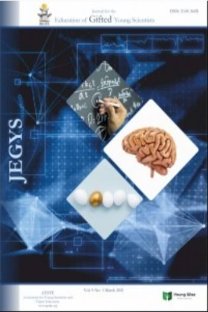Investigating and Analyzing the Situation of the Talented Students of Shahid Beheshti University of Medical Sciences: A qualitative study
Background:In this era, investing in human resources,especially the talented,is specifically important because they have high potential, creativity and initiative to advance science.so the present study was conducted to investigate the situation of the talented students at Shahid Beheshti University of Medical Sciences.
Methods:The present study is a qualitative research of content analysis type with a conventional approach. Participants included talented students who were selected by targeted sampling method in2019.Data collection was performed using in-depth and semi-structured individual interviews.
Results:From the findings of this study,four main themes were obtained,which include poor educational situation,research problems ,inappropriate welfare services and weakness in performing cultural affairs.
Conclusion:The results of the present study showed that the problems of the talented students in the fields of education, research and welfare are more than before. Therefore, it is suggested that the authorities and planners pay more attention to meet the needs of this group of students.
Keywords:
students, talent, content analysis,
___
- 1-Nikneshan SH, Nasr esfahani AR, Mirshah jafari E, Fatehizadeh M. Teachers 'use of creative teaching methods and assessment teachers' creative features the view of point talented students. Educational and Psychological Studies.2010;11(2):145-164. 2- Maker, C. J. Teaching models in education of the gifted. Austin, TX: Proed.1982.
- 3- Renzulli, J. S. (2000). The identification and development of giftedness as a paradigm for school reform. Journal of Science Education and Technology, 9(2), 95-114.
- 4-Nazemi A, Mosavi nasab M, Zeighami Sh, Ghadiri A, Taghvaee A, Naseri Sh, Naraghi N. An Introduction to the Concept of the Elite System for the Future.Tehran.1391.
- 5- Nazaripour AH, Mosavi SNJ, Hakak M, Pirzad A. Explanation of model design and talent management system in universities. Armaghane-danesh 2017.21(10),1029-40.
- 6- Cantu, L. Traditional methods of identifying giffted students "IDRA New Letter" JUNE-JULLY, Intercultural Development Recearch Association.1998.
- 7- Csikszentmihalyi M. Creativity: Flow and the psychology of discovery and invention. New York: Harper Collins. 1996.
- 8- Ghaffari H, Purkiyani M, Shkari Gh, Shaykhi A. Design of Model the Talent Management with an Approach Integrating Human Resources Activities. JMR;10(36):117-142.
- 9- Solimano A. Causes and Consequences of Talent Mobility; published in: The international mobility of talent: types, causes, and development impact; edited by Andres Solimano; United Nations University—World Institute for Development Economics Research (UNU-WIDER).2008.
- 10- Sander P, Stevenson K, King M, Coates D. University students' expectations of teaching. Studies in Higher Education 2000; 25(3): 309-23.
- 11- Mc-Neel. R.(2004). National survey of identification practices in gifted and talented education. Exceptional Children. 48(2). 124-132.
- 12- Paechter M, Maier B, Macher D. Students’ expectations of, and experiences in E-Learning: Their relation to learning achievements and course satisfaction. Computers & Education 2010; 54(1): 222-9.
- 13- Cheraghi Z, Nedjat S, Pasalar P, Baygi V, Ahmadi SN. The Ideal Status and Expectations of the Gifted and Talented Students: A Qualitative Study. J Qual Res Health Sci 2019; 7(4): 395-406.
- 14- Zohor AR, Fekri AR. The Viewpoints of Faculty Members about Research Activities Problems in Iran University of Medical Sciences. Payesh Journal. 2003;2:113-120. (In Persian)
- 15- Haynes B, Haines A. Barriers and Bridge to Evidence Based Clinical Practice. British Medical Journal. 1998;31(7):273-274.
- 16- Hamilton GA. Two Faces of Nurse Faculty: Teacher and Research. Journal of Advanced Nursing. 1986;11(2):217-223.
- 17- Mohammadi S, Labbafghassemi R, Amiri Z, Lameei A. Views and Expectations of Talented Medical and Dental Students in Shahid Beheshti University of Health Care and Medical Education on Educational, Research, Welfare and Extracurricular Facilities. Biannual J of Med Edu; Education Development Center, Babol Univ of Med 9 Sci.2014;2(1): 7-14.
- 18- Avaride S, Elmi M. Assessment of the factors affecting the social and cultural participation of female students of Payame Noor University. Women and Family Studies.2010;3(9):35-52.
- Başlangıç: 2013
- Yayıncı: Genç Bilge Yayıncılık
Sayıdaki Diğer Makaleler
Mohammad ZAHRİ, İ Ketut BUDAYASA, Agung LUKİTO
Maya ISDİANTİ, Harun NASRUDİN, Erman ERMAN
Elaheh RAHİMİNİA, Shahram YAZDANİ, Hoorieh RAHİMİNİA
Kgaogelo Johanna MASEMENE, Sıkhulıle Bongınkosı MSEZANE
Poppy YANİAWATİ, Jasem AL-TAMMAR, In In SUPİANTİ, Siti Zuraidah MD OSMAN, Acep SAEFUL MALİK
